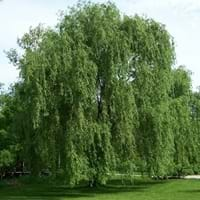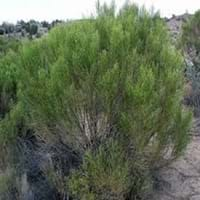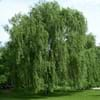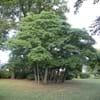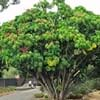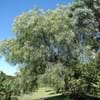Life Span
Perennial
Perennial
Origin
Eastern Asia, China
Hybrid origin, Southwestern United States
Types
Babylon
Not Available
Number of Varieties
Not Available
Habitat
Lake margins, River side, Swamps, Waste areas
riparian zones, Semi desert, Upland
USDA Hardiness Zone
5-9
8-10
Sunset Zone
3a, 3b, 4, 5, 6, 7, 8, 9, 10, 14, 15, 16, 17, 18, 19, 20, 21, 22, 23, 24
7, 8, 9, 10, 11, 12, 13, 14
Flower Color
Yellow green
White
Flower Color Modifier
Bicolor
Not Available
Fruit Color
Not Available
creamy white
Leaf Color in Spring
Green, Light Green
Green
Leaf Color in Summer
Green, Light Green
Green
Leaf Color in Fall
Light Yellow, Yellow green
Green
Leaf Color in Winter
Not Available
Green
Leaf Shape
Needle like
Oblanceolate , Ovate
Plant Season
Spring, Summer, Fall, Winter
Spring, Summer, Fall, Winter
Sunlight
Full Sun, Partial Sun
Full Sun
Type of Soil
Clay, Loam, Sand
Clay, Loam, Sand
The pH of Soil
Neutral
Acidic, Neutral, Alkaline
Soil Drainage
Average
Well drained
Bloom Time
Early Spring, Spring
Spring
Tolerances
Drought, Soil Compaction, Wet Site
Drought, Dry soil, Heat Tolerance
Where to Plant?
Ground
Ground, Pot
How to Plant?
Divison, Rooted stem cutting, Stem Planting, Transplanting
Seedlings
Plant Maintenance
Medium
Medium
Watering Requirements
Keep ground moist, Requires consistently moist soil, Requires regular watering, Requires watering in the growing season
Needs very little water
In Summer
Lots of watering
Lots of watering
In Spring
Moderate
Moderate
In Winter
Average Water
Average Water
Soil pH
Neutral
Acidic, Neutral, Alkaline
Soil Type
Clay, Loam, Sand
Clay, Loam, Sand
Soil Drainage Capacity
Average
Well drained
Sun Exposure
Full Sun, Partial Sun
Full Sun
Pruning
Prune if you want to improve plant shape, Remove damaged leaves, Remove dead leaves
Cut back old stems to the ground, Remove damaged leaves, Remove dead branches, Remove dead leaves
Fertilizers
Compost, fertilize every 2-3 weeks while growing, fertilize in growing season
can go long without fertilizers
Pests and Diseases
Aphids, Beetles, Caterpillars, Red blotch
Pests and diseases free
Plant Tolerance
Drought, Wet Site
Dry Conditions, Dry soil, Heat And Humidity
Flowers
Insignificant
Showy
Flower Petal Number
Not Available
Single
Foliage Texture
Medium
Fine
Foliage Sheen
Matte
Glossy
Attracts
Not Available
Butterflies
Aesthetic Uses
Beautification, Landscape Designing, Showy Purposes
along a porch, deck or patio, Beautification, Ground Cover, Showy Purposes, Wild gardens
Beauty Benefits
No Beauty Benefits
Not Available
Edible Uses
Yes
Sometimes
Environmental Uses
Air purification, Erosion control, Food for birds, Food for insects, Nesting sites for birds, Prevent Soil Erosion, Shadow Tree, Shelter for wildlife, Versatility
Air purification
Medicinal Uses
Headache, Sedative, Stomach pain
anti-inflammatory, Anti-oxidant, cholesterol-lowering
Part of Plant Used
Tree trunks
Twigs
Other Uses
Showy Purposes, Used as firewood, Used as Ornamental plant
Can be made into a herbal tea
Used As Indoor Plant
No
No
Used As Outdoor Plant
Yes
Yes
Garden Design
Cutflower, Dried Flower/Everlasting, Feature Plant, Shade Trees
Groundcover
Botanical Name
SALIX babylonica f. tortuosa
BACCHARIS 'Centennial'
Common Name
Corkscrew Willow
desert broom , broom baccharis , greasewood
In Hindi
पेंचकश विलो
desert broom
In German
Korkenzieher-Weide
Wüste Besen
In French
Tire-bouchon Willow
desert broom
In Spanish
Tire-bouchon Willow
escoba del desierto
In Greek
τιρμπουσόν Willow
desert broom
In Portuguese
corkscrew salgueiro
vassoura do deserto
In Polish
korkociąg Willow
desert broom
In Latin
corkscrew Willow
desert broom
Phylum
Magnoliophyta
Magnoliophyta
Class
Magnoliopsida
Magnoliopsida
Order
Malpighiales
Asterales
Family
Salicaceae
Asteraceae
Clade
Angiosperms, Eudicots, Rosids
Angiosperms, Asterids, Eudicots
Subfamily
Salicoideae
Not Available
Number of Species
Not Available
Not Available
Season and Care of Corkscrew Willow and Desert Broom
Season and care of Corkscrew Willow and Desert Broom is important to know. While considering everything about Corkscrew Willow and Desert Broom Care, growing season is an essential factor. Corkscrew Willow season is Spring, Summer, Fall and Winter and Desert Broom season is Spring, Summer, Fall and Winter. The type of soil for Corkscrew Willow is Clay, Loam, Sand and for Desert Broom is Clay, Loam, Sand while the PH of soil for Corkscrew Willow is Neutral and for Desert Broom is Acidic, Neutral, Alkaline.
Corkscrew Willow and Desert Broom Physical Information
Corkscrew Willow and Desert Broom physical information is very important for comparison. Corkscrew Willow height is 910.00 cm and width 460.00 cm whereas Desert Broom height is 60.00 cm and width 150.00 cm. The color specification of Corkscrew Willow and Desert Broom are as follows:
Corkscrew Willow flower color: Yellow green
Corkscrew Willow leaf color: Green and Light Green
Desert Broom flower color: White
- Desert Broom leaf color: Green
Care of Corkscrew Willow and Desert Broom
Care of Corkscrew Willow and Desert Broom include pruning, fertilizers, watering etc. Corkscrew Willow pruning is done Prune if you want to improve plant shape, Remove damaged leaves and Remove dead leaves and Desert Broom pruning is done Cut back old stems to the ground, Remove damaged leaves, Remove dead branches and Remove dead leaves. In summer Corkscrew Willow needs Lots of watering and in winter, it needs Average Water. Whereas, in summer Desert Broom needs Lots of watering and in winter, it needs Average Water.
